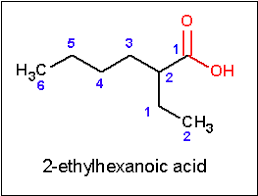The effect of Prolong shortage of 2-Ethyl Hexanoic Acid is observed in Japan, prices started rising in domestic market
- 06-Jan-2022 10:23 AM
- Journalist: Shiba Teramoto
Clouds of uncertainties are hovering around 2-Ethyl Hexanoic Acid (2-EHA) market in Japan due to crippling availability. Market sources have started marking inadequate supplies of the product, leading them to raise their offers amid stable to firm queries from domestic market. Meanwhile, consumers are tensed about their gains, as their margin has already started squeezing.
Post a key player KH Neochem announced maintenance turnaround for more than 3 months, market participants started anticipating product shortage in Q1 2022. As per ChemAnalyst previous analysis, anticipated shortage is now turning into reality and traders are raising their offers in order to improve their margins. As per the data, sudden price hike of more than USD 120/MT is observed during this week, which is expected to rise further in forthcoming weeks in Japan.
Analysing global phenomenon, global key players have been tackling with high input cost, which has made their profit vulnerable at the time when inflationary pressure were already squeezing their profitability. Consequently, previous announcement by OQ chemicals about increasing 2-EHA prices by USD 500/MT for global market are now in effect from January onwards, which has vanished any hope for cheaper imports. As per the primary respondent, they are facing difficulties to procure cargoes from domestic as well as from international market, however, some traders are taking benefits of high prices by selling off their older stocks.
As per ChemAnalyst analysis, 2-Ethyl Hexanoic Acid is expected to remain firm in forthcoming weeks across Japanese as well as global market. Moreover, the fear of trade disturbance under influence of Omicron spread might induce disbalance in international market and affect the 2-Ethyl Hexanoic acid pricing dynamics. Conclusively, 2-Ethyl Hexanoic Acid prices are expected to remain buoyant with no near-term ease in Japan at least till the end of Q1 2022.


